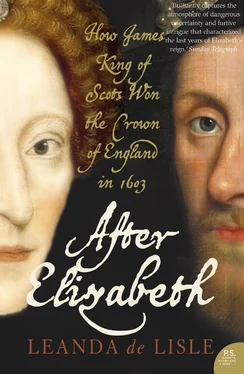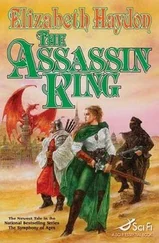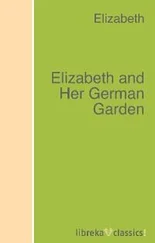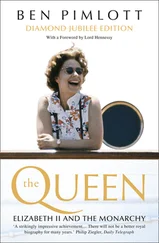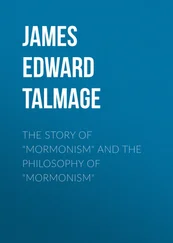The Reformation changed England forever. The simple fact that the country was no longer part of the supra-national Roman Church encouraged a stronger sense of separateness from the Continent and enabled Henry to develop a full-blooded nationalism to which his dynasty was central. Elizabeth, the child of this revolution, was not, however, her father’s heir for long. Anne Boleyn was executed before she was three years old and Elizabeth, already a bastard in the eyes of the Catholic Church, was declared illegitimate by her father in order that any children of the marriage to his new love, Jane Seymour, should take precedence over her, as she had once done over her sister, Mary. When Jane Seymour had her son, Edward, in 1537, it seemed to Henry that the question of the succession was answered. As Henry had no further children by the three wives that succeeded Jane Seymour he eventually restored Elizabeth and Mary in line to the succession after Edward, in default of Edward’s issue or any further children by his last wife, Catherine Parr. His decision was confirmed in the Act of Succession in 1544 – the year before Elizabeth had made her father the gift of the prayer book that the German Duke saw on her desk.
The Act of Succession allowed the King to alter the succession by testament, that is, in his will. This was significant for Henry’s will wrote into law who Elizabeth’s heirs should be if all his children died without issue. Henry had sought Elizabeth’s heirs amongst the descendants of his sisters, Margaret of Scotland and Mary Brandon, Duchess of Suffolk. Margaret, the eldest, had married James IV of Scotland, who was killed fighting the English at Flodden in 1513. Their son, James V, died after losing a later battle against the English and left his infant daughter, Mary Stuart, as Queen of Scots. She should have been Elizabeth’s heir under the laws of primogeniture, but Henry’s will disinherited the Stuart line in favour of that of the Suffolks in vengeance for the Stuart enmity to England and the Scots’ refusal to marry their Queen to his son.
Harington’s tract explained that the Scots had feared that if Mary Stuart married Prince Edward their country would have become a mere province of England. In the winter of 1602/3 the English had similar concerns that if James VI of Scotland inherited the throne their country might be subsumed into a new kingdom called ‘Britain’. Machiavelli had argued that changing a country’s name was a badge of conquest and Harington warned James that ‘some in England fear the like now’. The name Britain had an unpleasantly Celtic ring and people believed that the creation of a new united kingdom could nullify English Common Law.
Many believed that James was also precluded from the succession by the medieval law excluding heirs born outside ‘the allegiance of the realm’. 23 Edward VI had drawn attention to this law in drawing up his will in 1553, which had also excluded the Stuart line. Harington’s tract attempted to counter it by arguing that Scotland was not really a foreign country at all, since all Englishmen considered it ‘subject to England in the way of homage’. But it was a view with which James himself was unlikely to concur. *
Elizabeth had inherited the throne in 1558, following the death of her Catholic half-sister, Mary I. As a woman the twenty-five-year-old queen fitted awkwardly into the chivalric legend of the Tudors being the heirs to Arthur but Elizabeth proved adept at reshaping it. From the day of her coronation, where she greeted the crowds with ‘cries, tender words, and all other signs which argue a wonderful earnest love of most obedient servants’, Elizabeth worked to build an image that was at once feminine and supremely majestic. She became the mother of her people, the wife married to her kingdom, the unobtainable love object of the knights and nobles; a Virgin to rival the Queen of Heaven to whom medieval England had once been dedicated, the summation of the dynasty’s mythology.
Even in 1558, however, courtiers were considering the vital question of who would succeed her. The last three reigns had seen violent swings in religious policy, from Henry VIII’s Reformation, to the radical Protestantism of Edward VI, to the Catholicism of Mary. No one had believed Elizabeth would be able to bring stability to a kingdom still bitterly divided by religion unless she produced an heir to guarantee the future of her Protestant supporters: men such as Elizabeth’s closest adviser, William Cecil, the future Lord Burghley, who had sat on Edward VI’s Privy Council, but lost his post when Mary I succeeded him. A petition urging Elizabeth to marry was drawn up by the House of Commons on the first day of her first parliament. Her reply was that she preferred to remain unmarried. Whether she intended this to be her last word on the subject is questionable, but, in the event, the dangers of making a bad or divisive choice would always outweigh any advantages of love and companionship. Fear and jealousy arose in one quarter or another whenever a potential bridegroom looked to be a likely candidate for her hand. Harington, however, could not see that Elizabeth’s decision might be a consequence of their own prejudice that a woman was invariably ruled by her husband. Instead he shared the widespread view that her disinclination to marry was the result of some personal failing.
Harington claimed that Elizabeth had a psychological horror of the state of marriage and ‘in body some indisposition to the act of marriage’, but he admitted that she had made the world think that she might marry until she was fifty years old and ‘she has ever made show of affection, and still does to some men which in court we term favourites’. 24 These flirtations or dissimulations took some of the pressure off her to produce an actual spouse, but in the absence of one she was continually pushed to name a successor. It was only with hindsight Harington realised that Elizabeth had given her definitive answer, that she would never name an heir, in August of 1561, the year when she was confronted by the claims of her Suffolk heir, the Protestant Lady Catherine Grey, and her Catholic Stuart rival, Mary, Queen of Scots.
On 10 August Elizabeth had learnt that the twenty-year-old Catherine was heavily pregnant and that the father was Edward Seymour, Earl of Hertford. Now in his sixties, he was then young, dark and handsome; more significantly he was also a descendant of Edward III and the heir of Edward VI’s uncle, the Protector Somerset, who had ruled England during Edward’s early minority. A marriage between such a couple would be a very suitable royal match – too suitable from Elizabeth’s perspective since any son of such a union would have become her de facto heir and a possible rival. It was to Elizabeth’s horror then, that Catherine confessed they had wed in a secret ceremony in December 1560. Angry and fearful Elizabeth had her sent to the Tower and Hertford joined her soon after.
While Elizabeth was considering what to do next, an envoy arrived at court from the likely beneficiary of this fiasco, her cousin, Mary, Queen of Scots. In 1561 James’s mother was a charming, willowy, eighteen-year old, who at five foot eleven towered over most of her contemporaries. She had been raised the adored daughter of the French court destined to be Queen of France and at sixteen that destiny was fulfilled when she married Francis II. Francis, however, had died the previous December and that August she had returned to the violent country of her birth. Scotland had undergone its own Reformation the previous year, making Mary the Catholic Queen of a Protestant country. It was a possible template for her future as Queen of England and Mary’s emissary, William Maitland of Lethington, hoped that Elizabeth’s anger with Catherine Grey would encourage her to name Mary her heir. Instead Elizabeth announced that she would never name her successor.
Читать дальше
